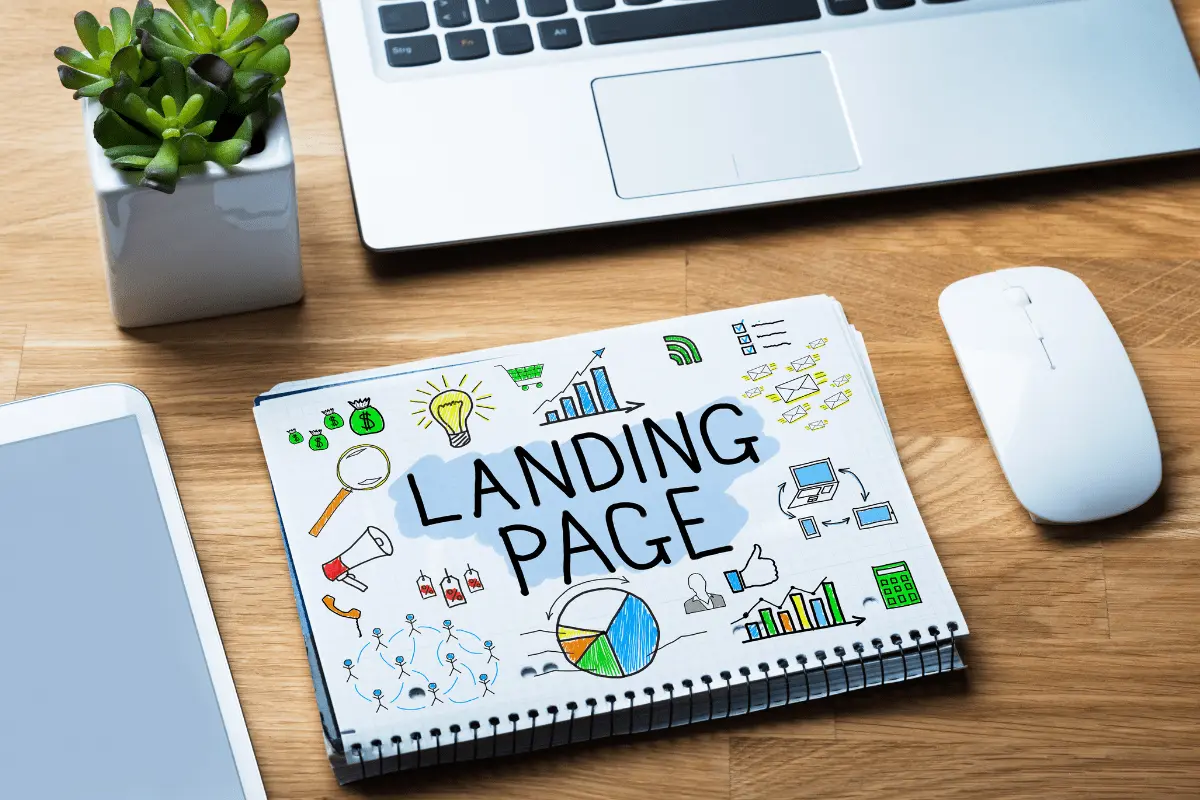Welcome to the ultimate guide on optimizing B2B landing pages! In today’s digital age, where first impressions are everything, having a well-crafted landing page can make all the difference in converting visitors into leads.
Whether you’re a seasoned marketer or just diving into the world of B2B marketing, this blog will provide you with actionable insights and best practices to create high-converting landing pages that drive results.
Let’s dive in and unlock the secrets to maximizing your B2B lead generation efforts through optimized landing pages.
Importance of Optimizing B2B Landing Pages
When it comes to B2B landing pages, optimization is key. These pages serve as the gateway to converting leads into valuable customers for your business. By optimizing your landing pages, you can significantly increase your chances of capturing and retaining those elusive leads.
Optimizing B2B landing pages involves tailoring them specifically to your target audience and goals. Understanding who you are trying to reach and what action you want them to take is crucial in designing a page that resonates with visitors.
A well-optimized landing page not only attracts visitors but also keeps them engaged through a seamless user experience. Ensuring that your page is easy to navigate, visually appealing, and loads quickly can make all the difference in converting clicks into conversions.
By crafting compelling copy and clear calls-to-action (CTAs), you can guide visitors towards taking the desired action on your landing page. The language used should be persuasive, informative, and relevant to entice users to explore further.
Visuals and multimedia elements play a significant role in enhancing the appeal of B2B landing pages. Incorporating high-quality images, videos, infographics, or animations can capture attention effectively and communicate information more engagingly than text alone.
Defining Your Target Audience and Goals
When it comes to B2B landing pages, one of the key steps in creating a successful campaign is defining your target audience and goals. Understanding who you are trying to reach and what actions you want them to take is crucial for crafting a compelling message that resonates with potential customers.
Start by conducting thorough research on your target market. Identify their pain points, interests, and motivations. This information will help tailor your messaging to address their specific needs and challenges.
Next, clearly outline your goals for the landing page. Whether it’s generating leads, driving sales, or increasing brand awareness, setting measurable objectives will guide the design and content decisions throughout the process.
By aligning your target audience with your business goals, you can create a focused and impactful B2B landing page that drives results.
Designing for User Experience and Conversion
When it comes to designing B2B landing pages, user experience plays a crucial role in converting visitors into leads. The layout should be clean and easy to navigate, guiding users towards the desired action without any confusion.
Prioritize simplicity and functionality in your design approach. Use clear headings, bullet points, and strategic placement of elements to create a seamless journey for your prospects. Remember, cluttered and confusing layouts can deter potential clients from engaging with your content.
Optimize loading times by reducing unnecessary elements that could slow down the page’s performance. A fast-loading page not only enhances user experience but also positively impacts conversion rates.
Incorporate intuitive forms that are easy to fill out, minimizing the number of fields required for submission. Streamlining this process can significantly boost conversions as it reduces friction for users.
By focusing on creating a visually appealing yet straightforward design that prioritizes user experience, you can increase the chances of turning visitors into valuable leads for your B2B business.
Crafting Compelling Copy and CTA
Crafting compelling copy and a strong call-to-action (CTA) is crucial for B2B landing pages. Your copy should be clear, concise, and persuasive, guiding visitors towards taking the desired action. Start by understanding your target audience’s pain points and how your product or service can solve them.
Use language that resonates with your audience, highlighting the value proposition effectively. Keep it simple yet impactful to maintain engagement. Incorporate relevant keywords strategically to improve SEO performance.
When it comes to CTAs, make them stand out visually on the page. Use actionable phrases like “Request a demo” or “Download now” to prompt immediate action. Ensure that your CTA buttons are easily clickable on both desktop and mobile devices for a seamless user experience.
Experiment with different wording, placement, colors, and sizes of CTAs through A/B testing to optimize conversion rates continuously. Remember, compelling copy paired with an irresistible CTA can significantly impact the success of your B2B landing page.
Utilizing Visuals and Multimedia
Visuals and multimedia play a crucial role in capturing the attention of B2B landing page visitors. By incorporating eye-catching images, infographics, videos, and animations, you can create a more engaging experience for your audience.
These elements not only make your landing page visually appealing but also help convey complex information in a more digestible format. Utilizing visuals can enhance the overall user experience and increase the likelihood of conversion.
When selecting visuals for your landing page, ensure they are high-quality, relevant to your content, and consistent with your brand identity. Remember that visual appeal should complement your message without overwhelming it.
Multimedia such as product demos or testimonial videos can provide valuable social proof and build trust with potential customers. Additionally, interactive elements like sliders or clickable graphics can encourage interaction and keep users on your page longer.
Leveraging visuals and multimedia effectively can significantly impact the success of your B2B landing pages by improving engagement and driving conversions.
A/B Testing and Analyzing Results
When it comes to optimizing your B2B landing pages, A/B testing is a game-changer. This process involves creating two versions of a page with slight variations to see which one performs better in terms of conversions. By analyzing the results obtained from these tests, you can make data-driven decisions on what elements work best for your target audience.
From changing the color of a CTA button to tweaking the headline copy, every small adjustment can have a significant impact on conversion rates. It’s essential to set clear goals for each test and track key metrics such as click-through rates, bounce rates, and time spent on page.
A successful A/B testing strategy requires patience and consistency. Remember that what works for one campaign may not necessarily work for another. Continuously monitor and analyze your results to identify trends and patterns that can inform future optimizations for your B2B landing pages.
Mobile Optimization for B2B Landing Pages
In today’s digital age, mobile optimization is crucial for B2B landing pages. With more users accessing websites on their smartphones and tablets, ensuring a seamless mobile experience is key to capturing leads and conversions.
When optimizing your B2B landing page for mobile devices, focus on responsive design. Make sure your page layout adjusts smoothly to different screen sizes, ensuring easy navigation and readability on smaller screens.
Keep the content concise and easily scannable. Mobile users tend to have shorter attention spans, so get straight to the point with clear messaging that highlights the benefits of your product or service.
Optimize loading times by compressing images and minimizing unnecessary elements. Slow-loading pages can drive away potential leads, so prioritize speed when designing for mobile.
Don’t forget about the call-to-action (CTA). Make it prominent and easy to tap with a clear directive that encourages visitors to take action. A well-placed CTA can significantly improve conversion rates on mobile devices.
By prioritizing mobile optimization in your B2B landing page strategy, you can provide a seamless user experience that drives engagement and ultimately boosts your business growth.
Best Practices from Successful B2B Brands
When it comes to B2B landing pages, learning from successful brands can provide valuable insights. One common best practice among top-performing B2B companies is the focus on clear and concise messaging.
They understand the importance of communicating their value proposition effectively and highlighting key benefits for potential clients.
Moreover, successful B2B brands often prioritize personalization on their landing pages. By tailoring content to specific target audiences, they create a more engaging experience that resonates with visitors. This personalized approach helps build trust and credibility with prospects, increasing the likelihood of conversion.
Additionally, leading B2B brands pay close attention to data analytics and performance metrics. By continuously monitoring and analyzing results, they can make informed decisions to optimize their landing pages for better outcomes. This commitment to data-driven optimization sets them apart in the competitive B2B landscape.
Drawing inspiration from these best practices can help businesses elevate their own B2B landing page strategies and drive success in generating leads and conversions.
Conclusion
Optimizing B2B landing pages is crucial for driving conversions and generating leads in the competitive business landscape. By defining your target audience, designing for user experience, crafting compelling copy and CTAs, utilizing visuals and multimedia effectively, A/B testing continuously, analyzing results meticulously, ensuring mobile optimization, and learning from successful B2B brands’ best practices, you can create high-performing landing pages that resonate with potential clients. Implement these best practices to enhance your B2B marketing strategy and maximize your ROI. Remember that continuous improvement is key to staying ahead in the ever-evolving digital marketing realm.



